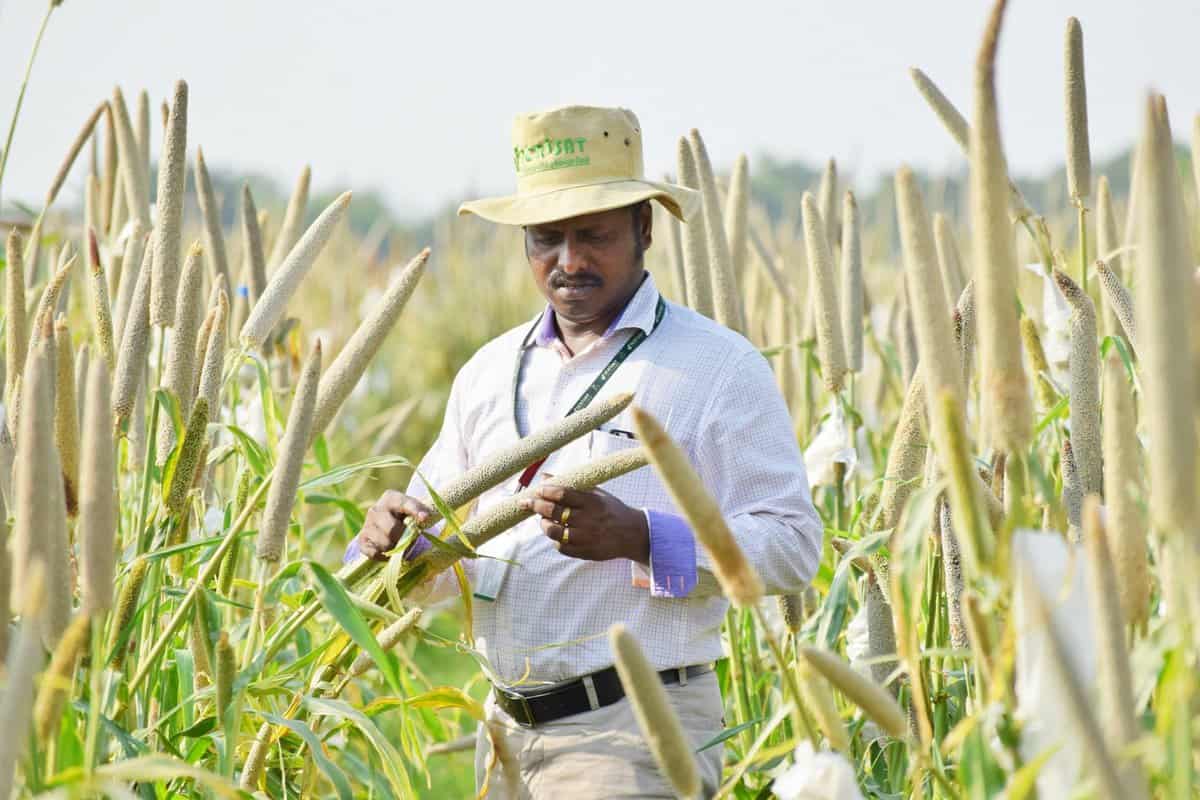
Bajra or a type of pearl millet has been gaining as a healthy food option among urban consumers in India in recent times. Now, it will get a bigger boost with international recognition coming the way of Dr Mahalingam Govindraj, the scientist who developed Dhanashakthi, the world’s first bio fortified variety of pearl millet in 2014.
Dr Govindraj has won the Norman E Borlaug Award – 2022 for Field Research and Application for developing the variety of pearl millet, which is rich in iron and zinc and research contributions in India and Africa.
A Senior Scientist for Crop Development at HarvestPlus and the Alliance of Biodiversity International and CIAT from April 2021, Govindraj is based in Hyderabad and has done substantial part of his work on pearl millet while he was working with the ICRISAT.
Having joined ICRISAT in 2007 and also pursuing his PhD, Dr Govindraj has been working on pearl millet bio fortification since 2011. Coincidentally, the Borlaug award was also constituted in 2011 in the memory of Norman E. Borlaug whose work as a young scientist in Mexico in the 1940s and 1950s was instrumental in the fight to eradicate global hunger and poverty.
Endowed by the Rockefeller Foundation, the $10,000 award is presented every October in Iowa, the US, to recognise the work of an individual scientist under the age of 40. Incidentally, Dr Govindraj is the first Indian to win the prize.
“The award to me in the international year of the Millet-2023, as announced by the UN is a recognition of not just my work but the pearl millet crop of India. The entire crop community of the country should be happy,” said Dr Govindraj.
Millet foods biofortification & Nutrition
Interestingly, Hyderabad hosts the Indian Institute of Millet Research under the Indian Council of Agricultural Research (ICAR), which has been doing pioneering work in developing regular varieties. Similarly, several small companies making millet-based products have sprung up in a bid to promote it as a health option to carbohydrates. In traditional home in Telangana State, bajra is a popular food item.
The bio fortification will help the poor women and men with the much required intake of nutrients like Iron and Zinc. According to the World Food Prize, which announced the award “About 200 gm of the dhanashakti variety could provide about 80% of the daily requirement compared to 20% they would get from the regular varieties of pearl millet.”
It is estimated that by 2024, more than 9 million Indians will be consuming the biofortified varieties of millets leading to improved nutritional standards. Farmers in West Africa have also adopted new biofortified varieties since 2019. The African variety launched is named ‘Chakti’.
Dr Govindraj says, India is the first country to have implemented a strategy to fix minimum standards for bio fortification of pearl millet. To reach this more than 200 varieties developed from 1998 in the country were analysed.
The high yielding pearl millet varieties with high-iron and high-zinc are expected to contribute to better nutrition and health of thousands of farmers and their communities and needy people across India, Africa and developing nations.
At the ICRISAT, Dr Govindraj, Principal Investigator-Pearl Millet Biofortification also developed the hybrid version ICHM 1201(Shakti-1201) in 2014. The entire research effort for pearl millet involves 26 partners—6 from the national research systems and 20 private seed companies.
“I have changed focus to developing hybrids thereafter and developed the first one in 2017. It was commercialised. In the last few years a total of 8-10 hybrids of pearl millet have been developed,” said Govindraj while expressing his elation at being selected for the coveted prize.
Hybrid varieties are popular in India. With the availability of more varieties the seed industry can grow and as millets picks up its place in the menu of people, the processing industry too will gain, he added.
Humble beginnings
Coming from a farming background in Tamil Nadu, Govindraj had early insight into the need for improving the nutrition content in crops. He did his Master’s in plant breeding and genetics from Tamil Nadu Agricultural University.
At the Harvest Plus since 2021 he is coordinating research work in Asia and Africa. In addition to pearl millet, they are diversifiying into bio fortification of rice, maize, cassava etc.
Bio fortification of crops began sometime in 2003-04 .The first food crop, a Vitamin A enriched sweet potato, was released in 2004. Since then, hundreds of biofortified varieties of 12 different staple crops have either been released or are in testing phases in more than 60 countries.



